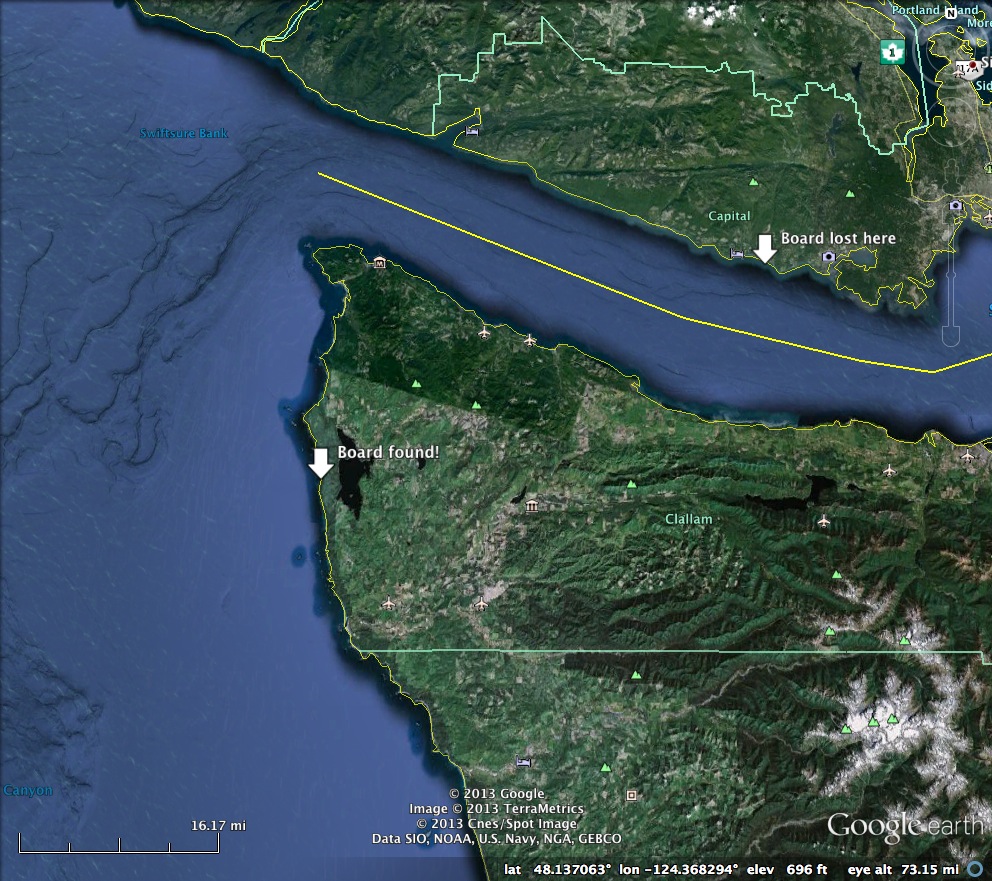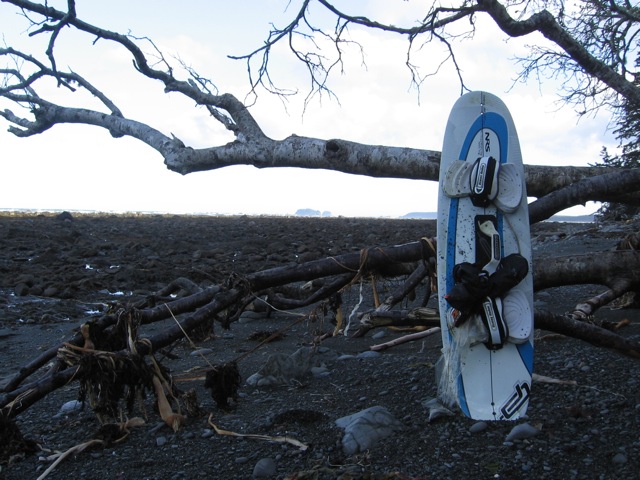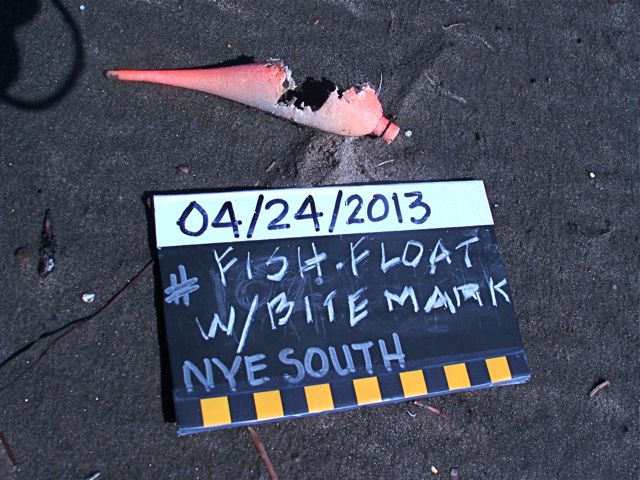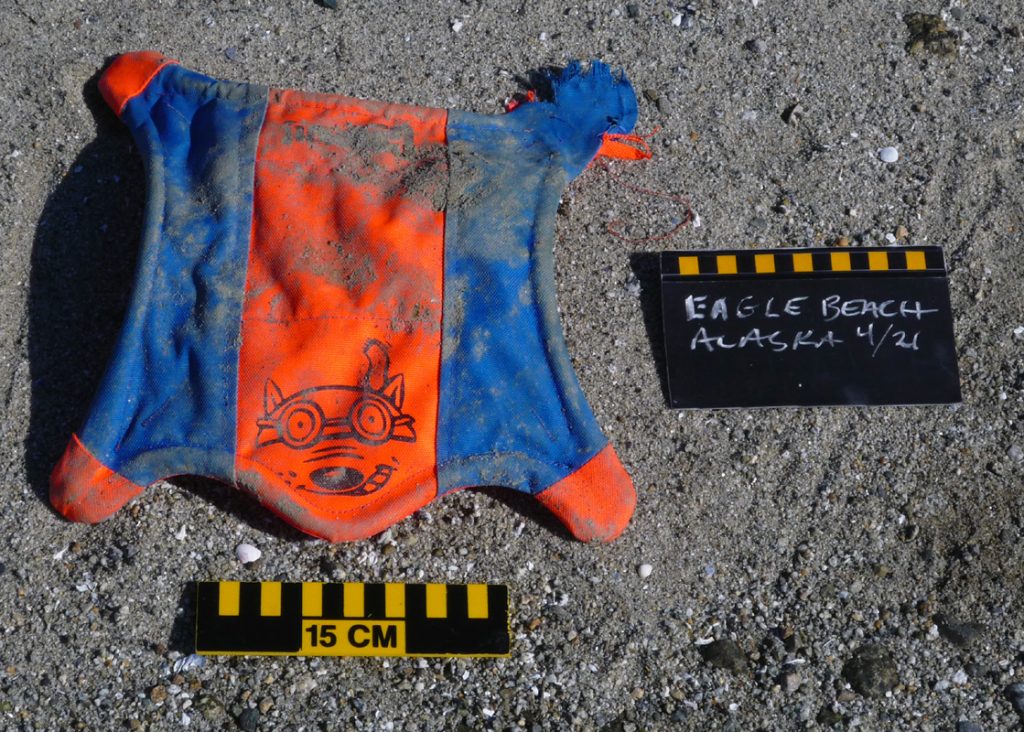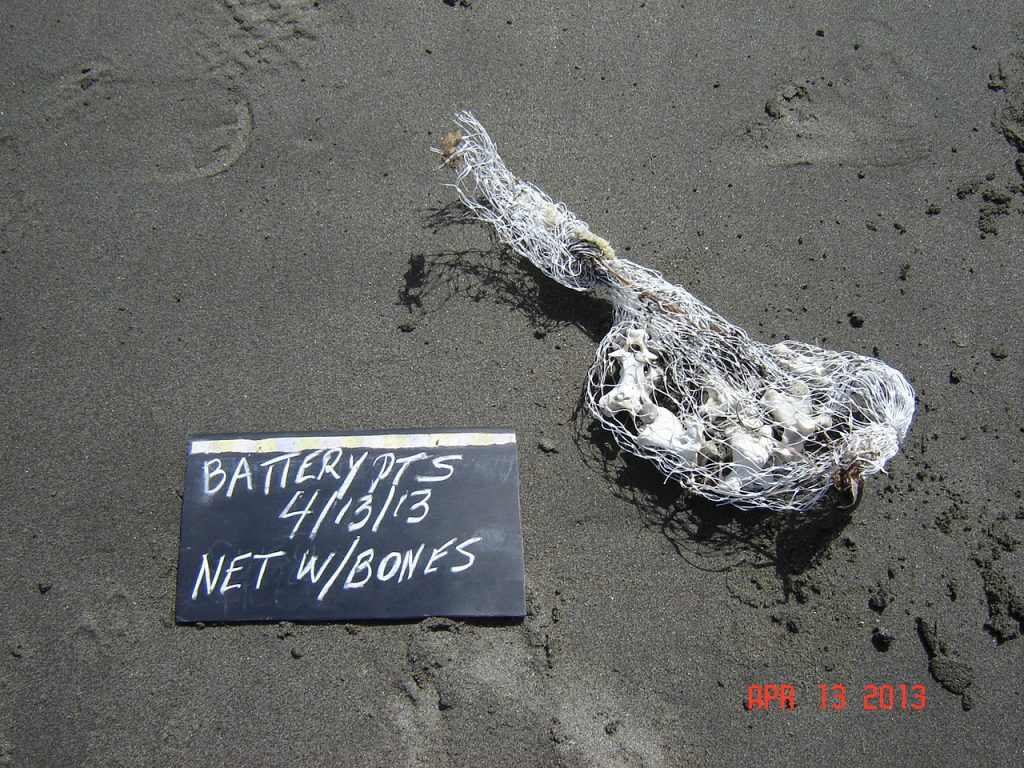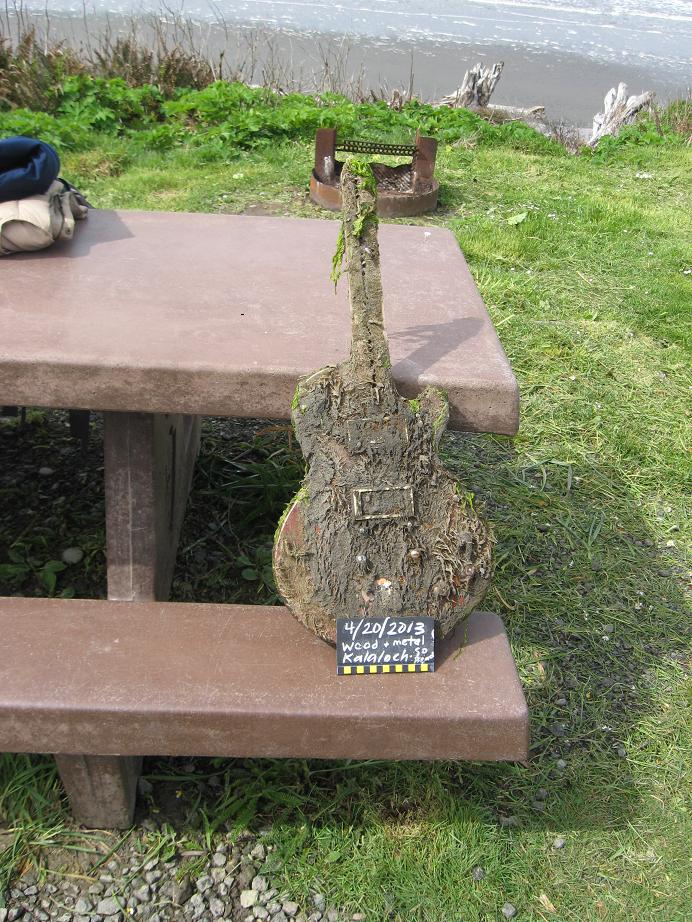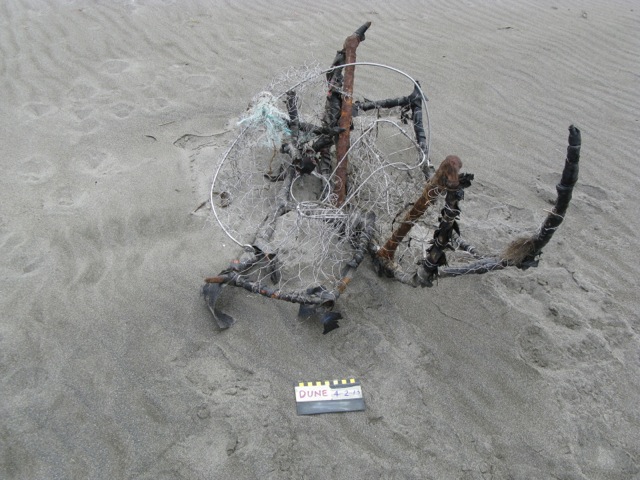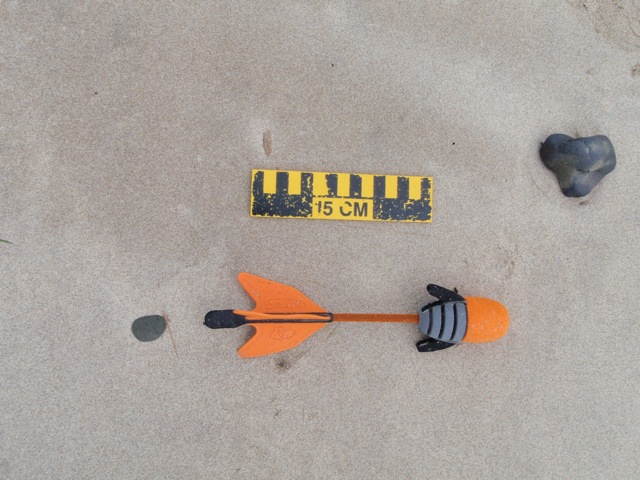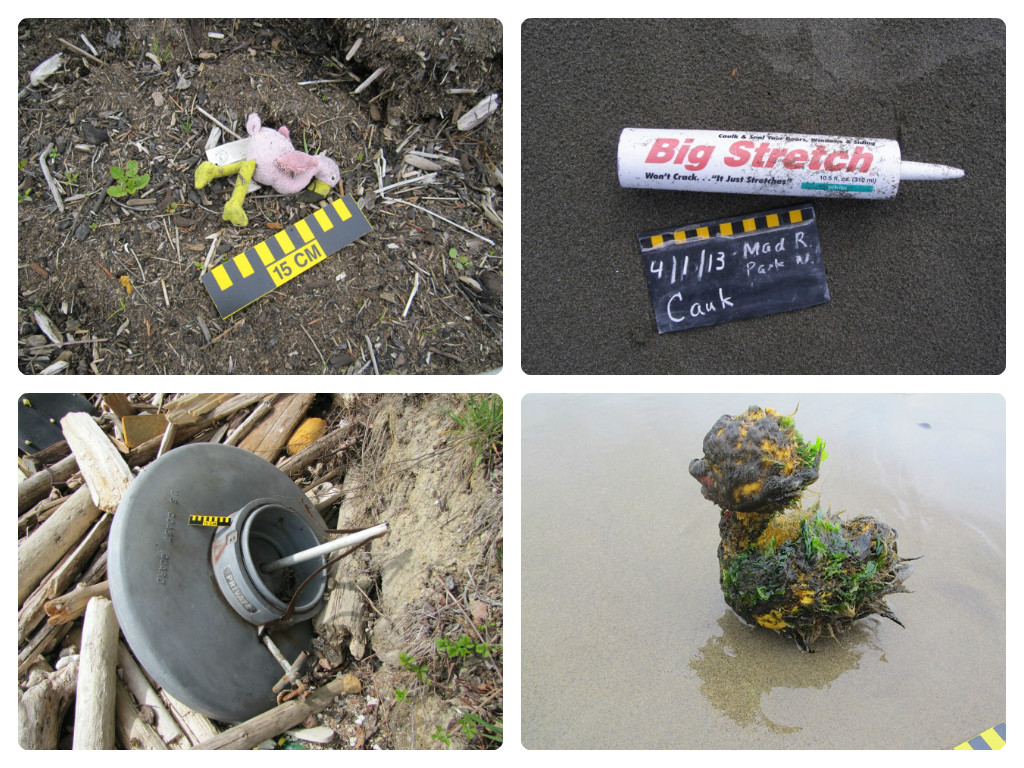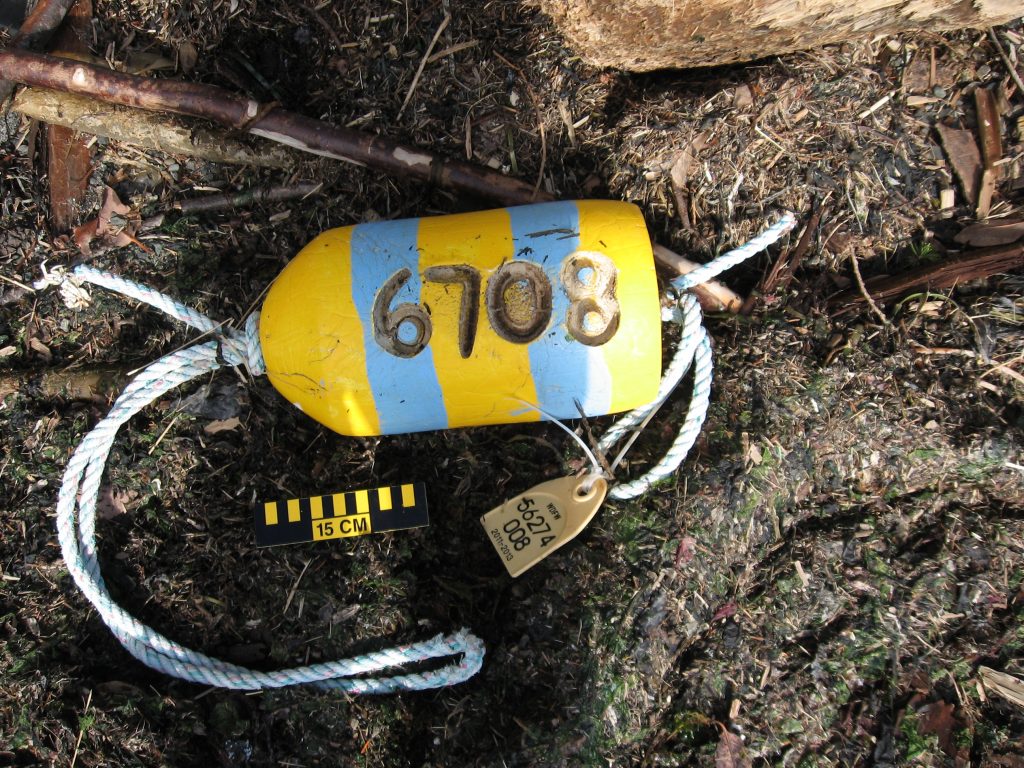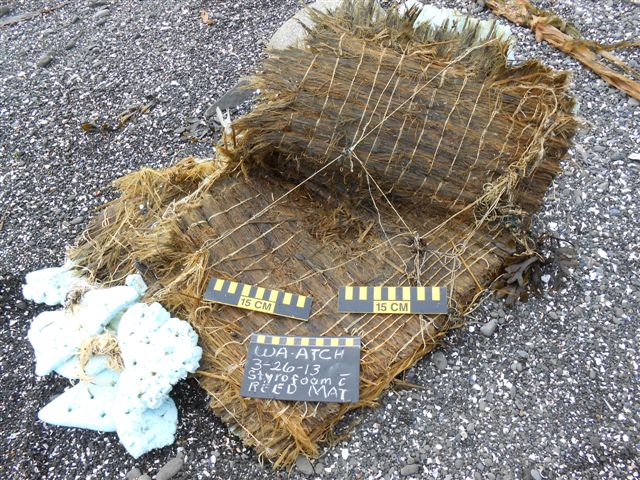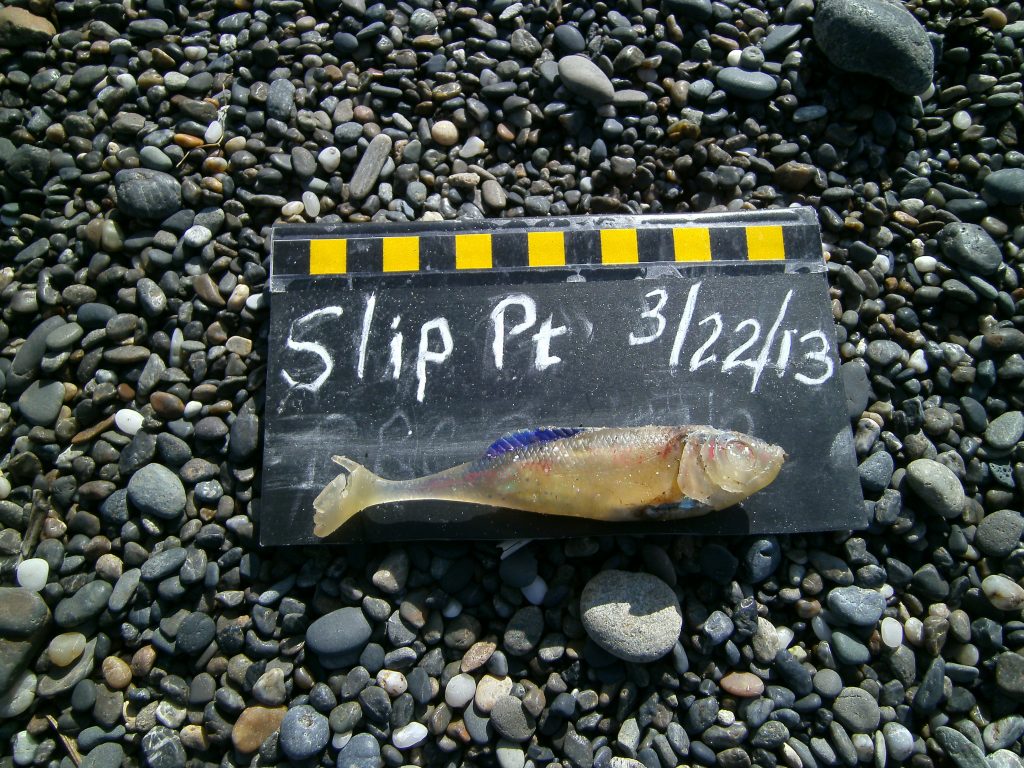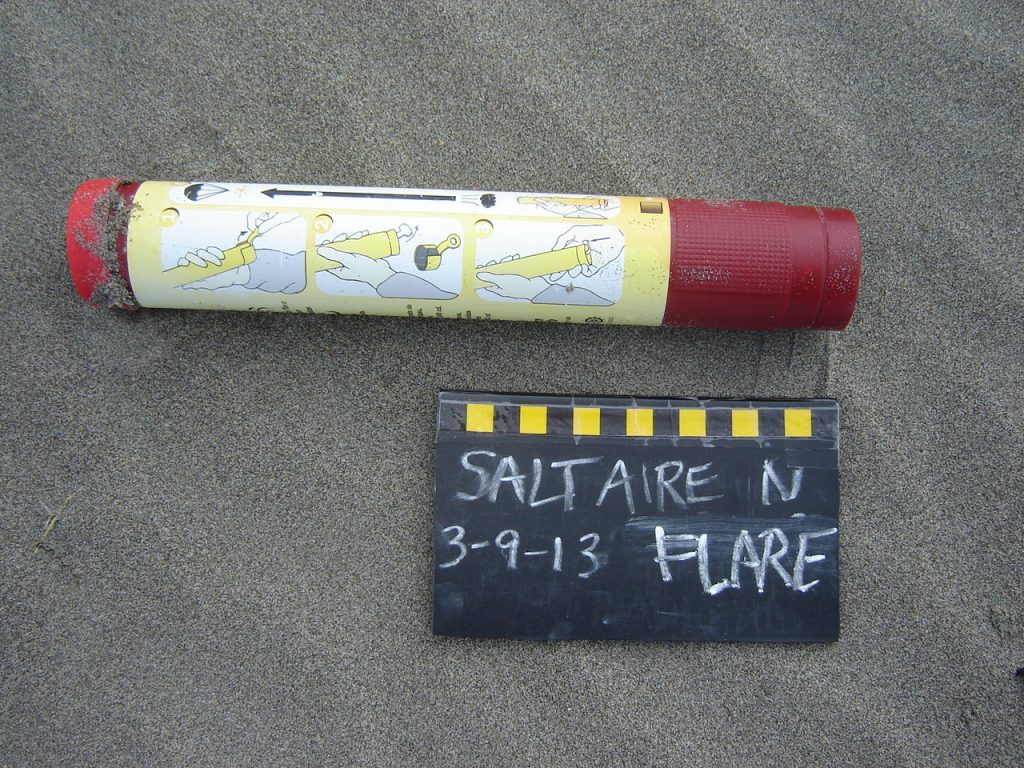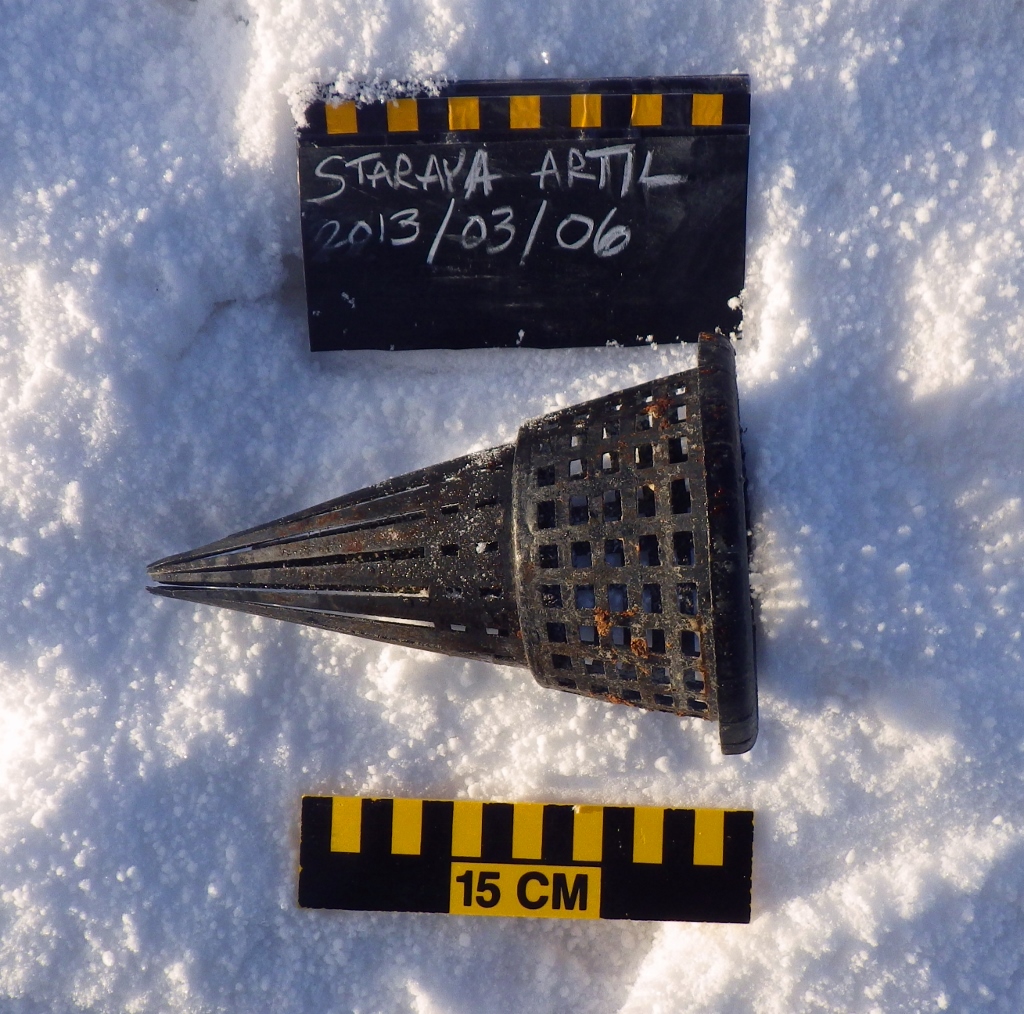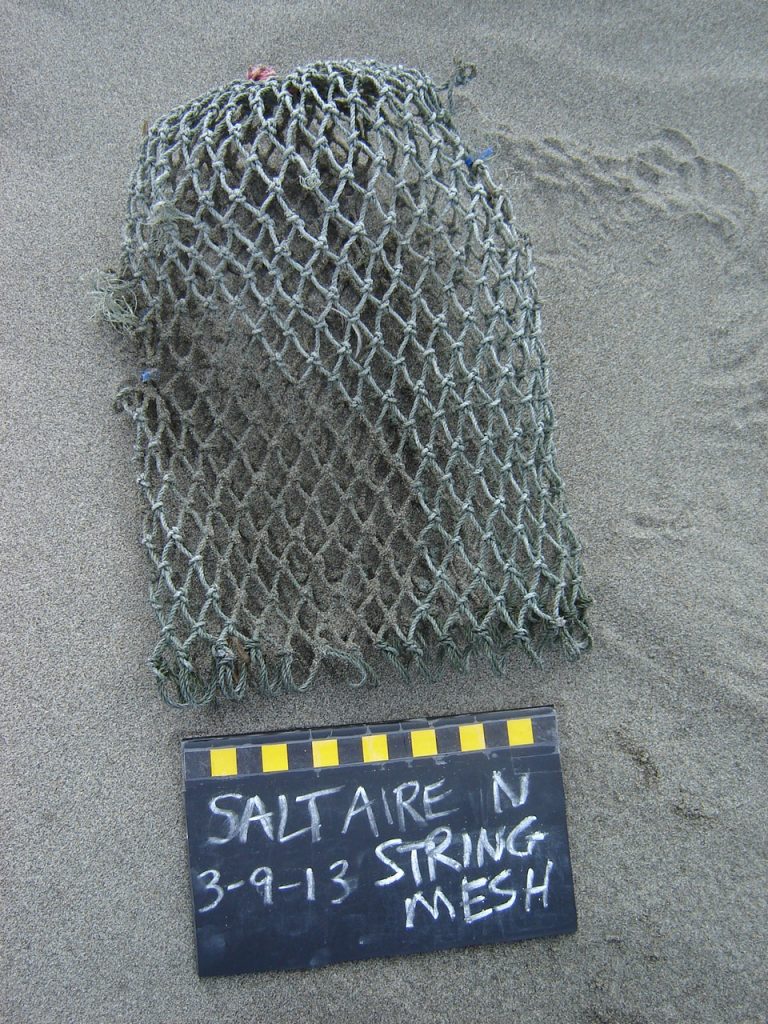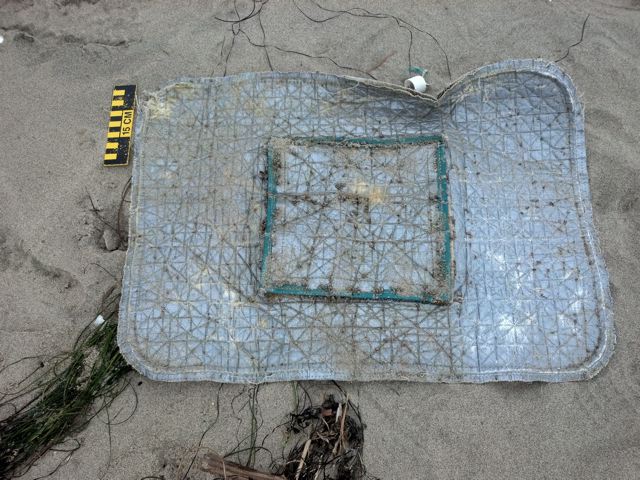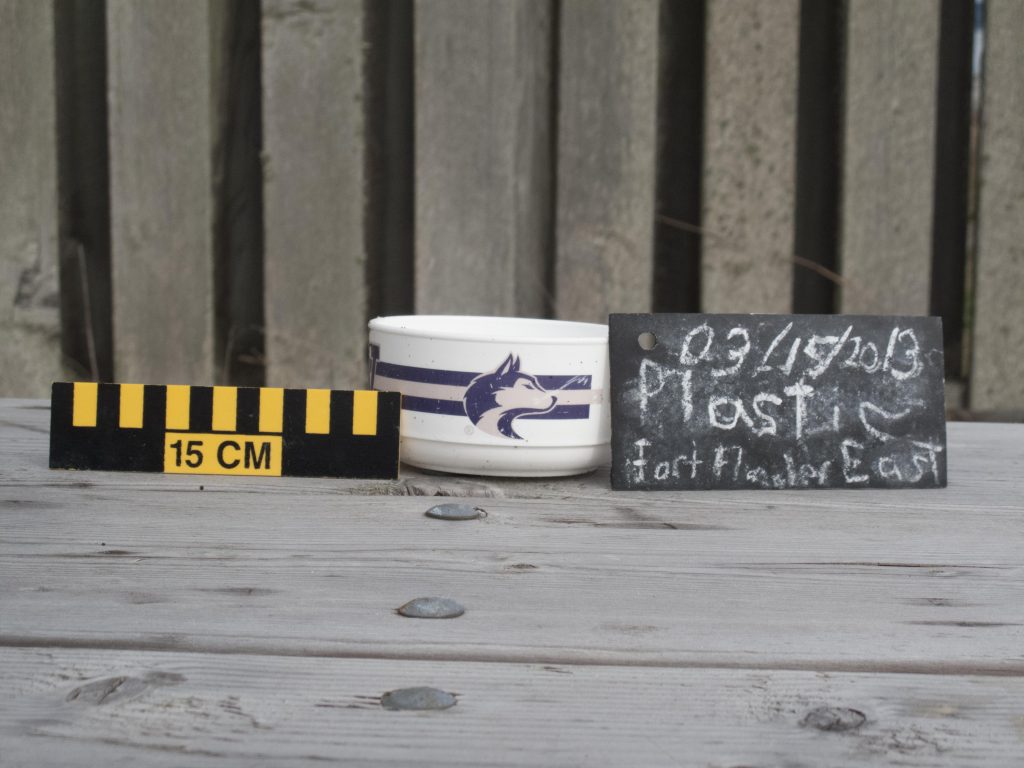On April 30th, while walking along the beach just south of Yellow Banks (on the north coast of Washington), COASST volunteer Dave Easton found a kite board washed up on shore. The board had the owner’s E-mail on it, so Dave contacted him. It turns out the owner had lost it on April 6th in Canada after a bad wipe out about 400 meters off shore. As Dave puts it, it’s “amazing how the currents and wind work; choreographed chaos.” Next time you’re out scouring the beach for marine debris, keep in mind the potential origin of the debris and the long journey it took to get there. The two are now working to reunite the owner with his lost board.
Tag Archives: Marine Debris
Seabirds Help Scientists Monitor Ocean Pollution
Scientists are beginning to realize that an effective way to test for marine pollution is through seabirds. Birds like pelicans and gulls are at the top of the food chain, meaning they can accumulate large quantities of the toxins in marine ecosystems through a process called bioaccumulation. In addition, many seabirds will return to the same spots every year to breed after covering large expanses of the ocean during migration. This makes them ideal for studying pollution in marine environments, as the birds essentially take samples every time they stop to feed. Scientists at the University of Manitoba are taking advantage of this phenomenon and have begun using non-lethal sampling methods, such as drawing blood or taking a feather, to analyze the toxin levels in the tissues of seabirds.
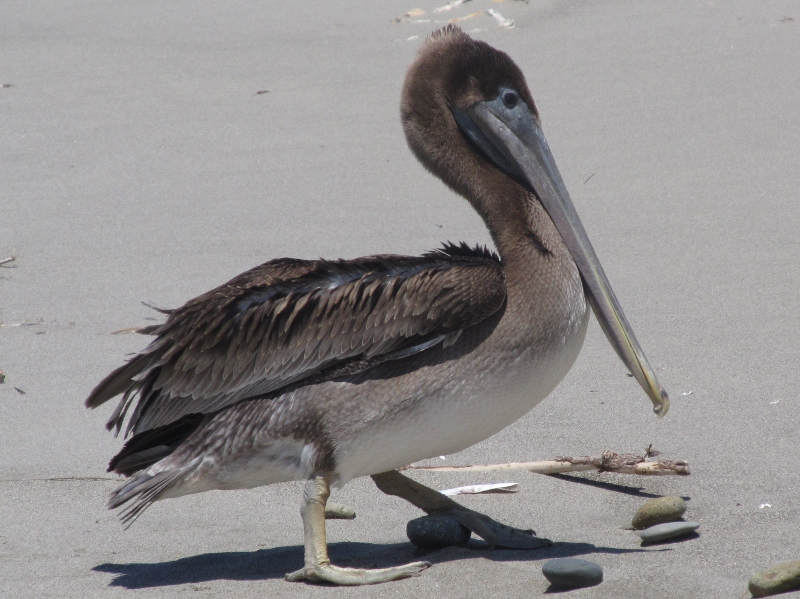
Birds like this Brown Pelican that spend a large part of the year out on the open ocean are helping scientists study ocean pollution.
Seabirds—both alive and dead—are providing a way to analyze the effect of plastics and other contaminants on the marine environment. Plastics continue to be one of the biggest threats to the oceans, with many of the chemicals found in them either leaching into the oceans or poisoning the animals that accidentally eat them. Plastics can also form a platform for other pollutants such as oil and industrial by-products to attach. Steps are being taken to regulate the use of certain chemicals found in plastics, but regulation can be tricky once the chemical is already on the market. Wildlife and environmental monitoring programs have already provided enough evidence to improve regulations on certain chemicals, a feat that would not have been possible without the cooperation of the birds.
For more information about this research click here.
Marine Debris Update
Marine Debris Update
Spring is here and many of you have taken to the beach in search of new marine debris items. As of today, we have 4,560 images! We are well on our way to our goal of 5,000 photos. We might even be able to get there by the end of April, so keep those photos coming. As a reminder, anyone can participate in the marine debris photo project, and you do not have to take the photos during your COASST survey. So grab your friends, grab your camera, and head out to the beach! Thanks again for all your work with this project. We couldn’t do it without you!
This week’s featured photos:
Marine Debris Update
Great work this March with marine debris photos! We set a new monthly record – 1018 photos taken in March. Well done! The collection continues to build, with lots of new and interesting debris found from all states. As we’ve mentioned, these photos are being categorized in a database based on attributes (color, size, material, etc). Attributes can then be directly related to marine debris’ harm to wildlife. For example, soft translucent plastic is known to be harmful to sea turtles because they ingest it more frequently than any other kind of plastic. A database of debris and linked attributes could help to direct clean-up efforts to the most harmful areas, create maps showing harm to wildlife, and understand current and weather patterns bringing debris ashore.
Marine debris photos: A stuffed flamingo toy found in the Puget Sound (top left), caulk found in California (top right), Coast Gaurd-related material that washed ashore in Puget Sound (bottom left), and an algae covered duckie from Oregon – match of the UW Huskies bowl (bottom right).
Rat Poison on Kodiak Beaches
The morning of March 31, two empty rat poison canisters were found on Afognak Island in Kodiak, AK. Rat poison usually comes in pellet form, used to fumigate grain ships. The aluminum phosphide containing pellets, when exposed to the moisture in the air, produce the poisonous gas phosphine which is powerful enough to kill rats and even humans (with enough exposure). It turns out that the canisters, found by local Kodiak resident Ian MacIntosh, were pellet containing. Luckily for MacIntosh he knew to be cautious with the containers due to public awareness campaigns created by the Washington Department of Ecology between 2008 and 2012 after nearly 100 of these containers washed up. The origin of these containers remains unknown, however they have also began to wash up along the coast of Oregon and Vancouver Island as well. The best thing to do is to avoid contact with the containers and instead, report the canisters immediately.
For further reading:
http://www.adn.com/2013/04/10/2859642/rat-poison-canisters-washing-up.html
Washed Ashore Exhibit Opens in Bandon, OR
A cool exhibit about sea life and the threat of ocean pollution opened on March 23 at the Harbortown Event Center in Bandon, Oregon, located at 324 Second St. SE in Old Town Bandon. The Washed Ashore exhibit is an internationally famous touring exhibit that has appeared at many venues in Oregon and California, including the Oregon Coast Aquarium, The Marine Mammal Center in Sausalito, Calif., The Living Coast Discovery Center in Chula Vista, Calif., and the Newport Visual Arts Center in Oregon.
Washed Ashore, an environmental education project, uses art and community involvement to communicate the dangers of marine debris to ocean life. Founded in 2010, Washed Ashore has collected more than eight tons of marine debris and is a founding member of the Oregon Marine Debris Team. In addition, Washed Ashore works closely with a number of organizations to address Japanese tsunami marine debris.
The Washed Ashore exhibit is comprised of fifteen giant sculptures of marine organisms built from scavenged marine debris, and is the only art show utilizing marine debris in the nation. Local volunteers put together each sculpture, some of which are up to fifteen feet long, in community workshops led by Angela Hasltine Pozzi.
Since local volunteers make this project possible, citizens of Coos County are invited to help put together the next pieces for the exhibit, which include sea horses, penguins, a shark, and an octopus. In addition, Washed Ashore is always accepting donations of marine debris, and they can be dropped off at Art 101 just south of town. For more information, contact Frank Rocco, Washed Ashore development director, 415-847-1239 or FrankRocco@WashedAshore.org.
The full article by Amy Moss Strong featured in the Bandon Western World can be found here
Marine Debris Update
Marine Debris Update
We are continuing to build our data base of marine debris images here at COASST. As of today we have collected 3,972 images thanks to all of your help! We are on our way to reaching our goal of over 5,000 photos so keep the photos coming. We are looking for images of any marine debris, large or small, common or unique. The photos can come from any beach, not just your COASST beach. Next time you head on to the beach remember to grab your camera and photo ruler. You never know what you might find!
Here are just a few of the things we’ve seen recently:
If you want to keep up with the latest new from COASST make sure to:
Like us on Facebook https://www.facebook.com/COASST
Follow us on Twitter https://twitter.com/COASST
Thanks again for all your help with this project. We couldn’t do it without our wonderful volunteers!
Sue Namimami Teaches about Beach Stewardship
This photo sent to us by one of our COASST volunteers is of Sue Namimami a lovely lady made entirely of marine debris found in Ocean Shores, WA. She was made by Gini Schuster as part of the Ocean Shore’s Beachcomber fun fair. Currently she is on display at the Ocean Shores Interpretive Center. Sue reminds everyone to “Pack it out, even if you didn’t ‘pack it in’!”.

